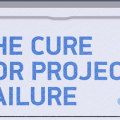Have you been dealing with discomfort every time you need to visit the restroom? Do you find that those restroom visits have become more and more frequent as of late? While these could be indicative of many different pelvic disorders, you might want to consult with a qualified professional about interstitial cystitis. With an estimated 700,000-4,000,000 sufferers around the nation (90% of which are women) this common disorder can definitely have its toll on those who suffer. So, how do you diagnose it and what can you do to treat it?

What Are the Symptoms?
Though the cause of interstitial cystitis is still unknown, there are a variety of symptoms that you can look out for, including:
- Frequent urinations, which can range from annoying to completely debilitating.
- A consistent nagging feeling around the bladder that never quite goes away.
- An increased urgency to urinate when the need comes along, not being able to hold it for any length of time.
- Dysuria, which can cause pain or burning during urination.
- Nocturia, which might cause you to have a restless night or have trouble sleeping at all.
- Many other painful symptoms.
How Can You Tell It Is Interstitial Cystitis?
Since there are a wide variety of disorders that might have these same symptoms, the only real way to know what you have is to be diagnosed by the proper medical professional. Remember, the cause of this disorder is unknown, so self-diagnoses is not recommended.
Could It Be Another Disorder?
Ultimately, these symptoms could actually point to a great many different pelvic disorders. The pain is also commonly found in pelvic floor dysfunction, so you might have that instead. One of the first things to consider is whether you are a man or a woman. While interstitial cystitis is common among female patients, it is not common among males. Instead, it might be more likely you have prostatitis. Before you assume you have any specific disorder, it is important that you talk to a qualified medical professional and get properly diagnosed. This way, you can receive the treatment you need.
Treating it With the Wise Anderson Protocol
Fortunately, living with interstitial cystitis does not have to be difficult thanks to the Wise-Anderson Protocol. Developed as a revolutionary treatment method at Sanford University, it involves a comprehensive clinical that lasts six days. By the end of the clinical, your symptoms may not be eliminated, but you will have all the tools and techniques you need to make sure you no longer have to suffer. During this time, you learn to better control the muscles on your pelvic floor and work towards reducing the symptoms with a more holistic approach.
Since there is no other cure for this type of disorder, it is important to remember that much of your success depends on you. Just keep in mind, this treatment will help you manage better and can return you to a more normal routine. So, if you think you or a loved one might suffer from interstitial cystitis, make sure to consult a medical professional right away.





























No Comments
Leave a comment Cancel